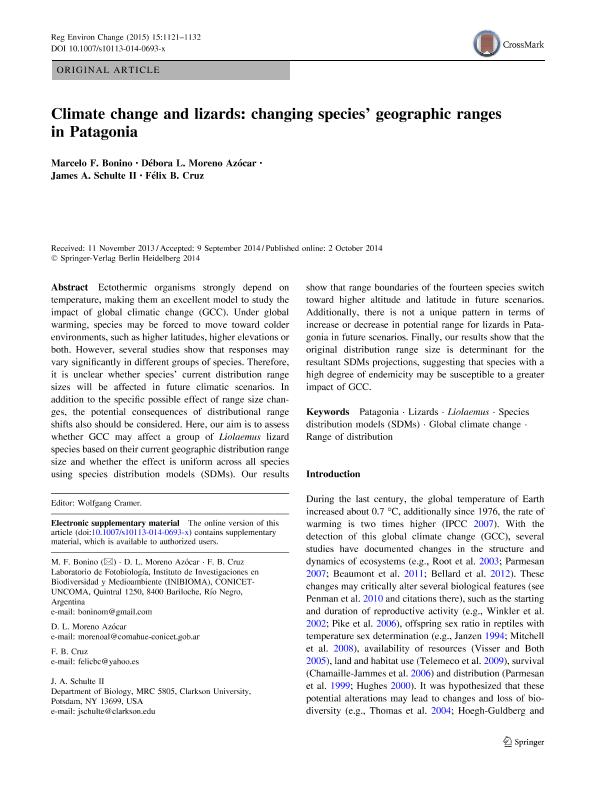Artículo
Climate change and lizards: changing species' geographic ranges in Patagonia
Fecha de publicación:
08/2014
Editorial:
Springer Heidelberg
Revista:
Regional Environmental Change
ISSN:
1436-3798
e-ISSN:
1436-378X
Idioma:
Inglés
Tipo de recurso:
Artículo publicado
Clasificación temática:
Resumen
Ectothermic organisms strongly depend on temperature, making them an excellent model to study the impact of global climatic change (GCC). Under global warming, species may be forced to move toward colder environments, such as higher latitudes, higher elevations or both. However, several studies show that responses may vary significantly in different groups of species. Therefore, it is unclear whether species’ current distribution range sizes will be affected in future climatic scenarios. In addition to the specific possible effect of range size changes, the potential consequences of distributional range shifts also should be considered. Here, our aim is to assess whether GCC may affect a group of Liolaemus lizard species based on their current geographic distribution range size and whether the effect is uniform across all species using species distribution models (SDMs). Our results show that range boundaries of the fourteen species switch toward higher altitude and latitude in future scenarios. Additionally, there is not a unique pattern in terms of increase or decrease in potential range for lizards in Patagonia in future scenarios. Finally, our results show that the original distribution range size is determinant for the resultant SDMs projections, suggesting that species with a high degree of endemicity may be susceptible to a greater impact of GCC.
Archivos asociados
Licencia
Identificadores
Colecciones
Articulos(INIBIOMA)
Articulos de INST. DE INVEST.EN BIODIVERSIDAD Y MEDIOAMBIENTE
Articulos de INST. DE INVEST.EN BIODIVERSIDAD Y MEDIOAMBIENTE
Citación
Bonino, Marcelo Fabián; Moreno Azócar, Débora Lina; Schulte, James A.; Cruz, Felix Benjamin; Climate change and lizards: changing species' geographic ranges in Patagonia; Springer Heidelberg; Regional Environmental Change; 15; 6; 8-2014; 1121–1132
Compartir
Altmétricas




